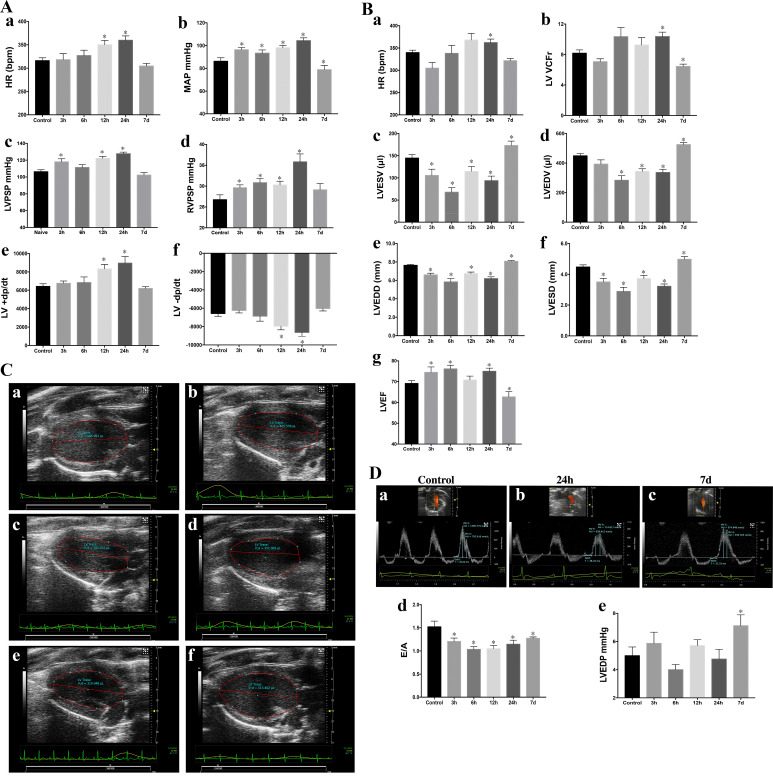Fig. 3.
Acute (3–24 h) and delayed (7-day) effects of Bromine (Br2) inhalation (600 ppm, 45 min) on hemodynamics and cardiac function (n = 8 per group). A: heart rate (HR) during hemodynamic measurements (a), mean arterial pressure (MAP; b), left ventricular (LV) peak systolic pressure (LVPSP; c), right ventricular peak systolic pressure (RVPSP; d), maximal rate of LV pressure rise (+dP/dt; e), and maximal rate of LV pressure fall (−dP/dt; f). Data are means ± SE. *P < 0.05 vs. 0 ppm. B: HR during echo/Doppler measurements (a), LV velocity of circumferential shortening (VCFr; b), LV end-systolic volume (LVESV; c), LV end-diastolic volume (LVEDV; d), LV end-systolic diameter (LVESD; e), LV end-diastolic diameter (LVEDD; f), and LV ejection fraction (LVEF; e). Data are means ± SE; n = 8 for each group. *P < 0.05 vs. 0 ppm. C: representative parasternal long-axis images of the LV of a control rat (a) and rats 3 h (b), 6 h (c), 12 h (d), 24 h (e), and 7 days (f) after Br2 exposure. D: representative image of LV diastolic indexes measured by transmitral pulse Doppler of a control rat (a) and rats 24 h (b) and 7 days (c) after Br2 exposure. MV, mitral valve; E, early filling flow velocity; A, late filling flow velocity, IVRT, isovolumic relaxation time. The ratio of peak velocities of early to late transmitral waves (E/A; d) and LV end-diastolic pressure (LVEDP; e) are shown. Data are means ± SE; n = 8 for each group. *P < 0.05 vs. 0 ppm.

